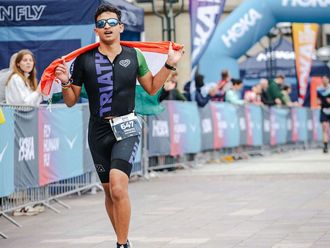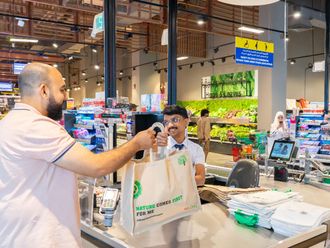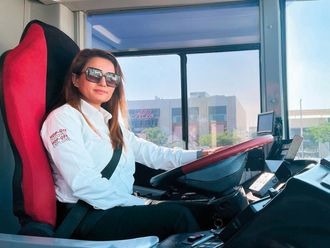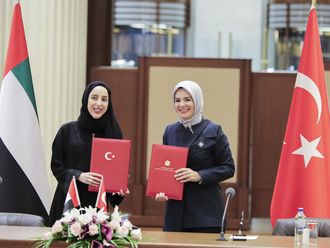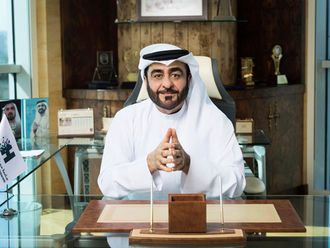Khalid Al-Ali talks about his late father Naji Al-Ali, the Palestinian caricaturist, to Kavitha S. Daniel
Caricatures set life bare, spread life on strings in the open air and public streets, capturing life wherever found and taking it to the surface for the world to see, where there is no opportunity to hide the gaps and flaws of life. In my opinion, caricatures preach hope, revolution and rebirth.
– Naji Al-Ali
His alter ego is always the diminutive Hanzala. The late Palestinian cartoonist Naji Al-Ali's illustrations constantly featured little Hanzala, through whom he spoke to people. The barefoot Hanzala always appears with his back to the world, clad in torn clothes, his distinctive, outsized, tonsured head sprinkled with a few spiked strands of hair. And, he always has his two small hands clasped behind his back.
It could be construed as a belligerent stance, a sign of vulnerability, rejection or as a mute witness to the events of the world. But, it cannot be denied that for many years he served – and still serves – as a mouthpiece for the revolutionary Naji Al-Ali, who paid for his views with his life when he was assassinated in 1987. He was 51 years old.
As Khalid Al-Ali, the eldest son of Naji who is a London based fund manager and organiser of his father's exhibitions around the world, reveals in an interview: "My father created Hanzala in 1969. He made him a child because it is children who can always speak their mind openly. He was also his conscience and a compass to lead him back home."
Home being Palestine for Naji Al-Ali, a refugee of the 1948 invasion, who unreservedly pursued the dream all through his life, of returning to his homeland one day.
Thus, his cartoons circle around the Palestinian issue and events in the Arab region, comments Khalid Al-Ali, who is presently in Abu Dhabi to arrange an exhibition of his father's work at the Abu Dhabi Cultural Foundation. The exhibition will go on till December 31, to coincide with Naji Al-Ali's 15th death anniversary.
The 180 cartoons of Naji Al-Ali on display at the exhibition, completed between 1980 and 87, seem to concentrate primarily on the Israeli invasion and the U.S. involvement in the Arab world. It depicts compromising and apathetic politicians, Palestinian hopes of getting their homes back and has plenty of other images associated with their struggle like keys, crosses, stones and flowers.
American intervention in the region is emphasised in a number of sketches – of American soldiers with wooden keys for legs, parachutes landing on a field full of keyholes, Israeli tanks travelling in a land deserted except for a row of black crows perched on a farmer's plough. Others highlight class inequality in the region, while yet others mock television shows on the Palestinian issue, with one showing a television set fixed in the middle of a wall in the Palestinian settlement area. A caricature features people drowning in a sea of question marks, while yet another shows a leader sitting before a chess board, while the common man, fed up with the political manoeuvres, places a bullet on the chess board, and still another of a band of human like figures with their mouths muzzled by a zip that traces the letters USA.
That was his way of depicting the inability of the leaders and public opinion to act, explains Khalid. "It was because his cartoons influenced and struck a chord among the masses that he was assassinated," he points out.
The mood was for compromises and negotiation in 1987 and his cartoons at that time were seen as inciting people, adds Khalid, who grew up on his father's ideals and principles. Recalling the day of his father's assassination in London, he remembers his father left home after completing a cartoon in the morning, to walk to the newspaper's office to deliver his work. Suddenly, a man appeared behind him and shot him in the head, he recounts.
"My father was not a sloganist but popular because of his ideas," believes Khalid. "His caricatures are timeless because they are relevant even today. For example, there are images of the Intifida of today," he exclaims, saying that his father had predicted the Intifida 20 years ago. Naji's portfolio contains nearly 10,000 cartoons and Khalid has chosen the ones relevant to the times and the region to exhibit here.
Trying to explain his father's popularity when he was alive and later, Khalid says: "You don't have to be literate to understand his message. You don't need to analyse an illustration of an American plane chopping off palm trees, do you?" he asks.
Apart from the Palestinian cause, Naji also believed in the equality of women and freedom of expression, and a few of his caricatures reflecting these views can also be spotted at the exhibition.
Khalid, however, does not carry many personal memories about his father, unfortunately. For, he did not see his father very much as a child.
"My father was away most of the time; he was totally taken up with his work and it was hard for him. He had to be creative everyday and his was not a nine to five job," he explains. "My mother was everything for us," he adds.
Today, Khalid has taken the responsibility of organising his father's exhibition in the Arab countries every once a while. "Somebody has to do it. After all, his work is still relevant and it's one way of keeping him alive. If people thought by killing him they have silenced him forever, we would like to prove that wrong. His body of work, drawn 20 years ago, is still relevant today," he points out.
And going by the crowds at the opening of the exhibition, one cannot but agree with him.
HIGHLIGHTS
- Born in Al-Shajarah village in North Palestine in 1936.
- Lived and worked in Saudi Arabia, Lebanon and Kuwait. In Lebanon, he was with Al Safir newspaper in 1974. In Kuwait he was with Al Qabas newspaper. After 1983 he worked with Al Qabas International in London and even did a stint with Al Khaleej newspaper
in the UAE.
- He held many exhibitions, was awarded several prizes and created more than 10,000 works in his life.
- He was shot dead in 1987 in London when he was 51 years old.





